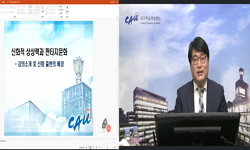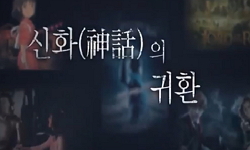This paper examines the creative background and creative principles, focusing on Park In-ro's "Seonsangtan". Park In-ro, who participated in the war as a righteous army at the age of 32 in 1592, when the Imjin War broke out, had abundant experience as...
http://chineseinput.net/에서 pinyin(병음)방식으로 중국어를 변환할 수 있습니다.
변환된 중국어를 복사하여 사용하시면 됩니다.
- 中文 을 입력하시려면 zhongwen을 입력하시고 space를누르시면됩니다.
- 北京 을 입력하시려면 beijing을 입력하시고 space를 누르시면 됩니다.

박인로의 <선상탄(船上嘆)> 창작 배경과 그 원리 = Park In-ro's "SeonSang-tan" Creation Background and Its Principles
한글로보기https://www.riss.kr/link?id=A109021245
-
저자
이혜경 (경남대학교)
- 발행기관
- 학술지명
- 권호사항
-
발행연도
2024
-
작성언어
Korean
-
주제어
박인로 ; 임진왜란 ; 현장성 ; 즉흥성 ; 상상력 ; 전고(典故). ; Park In-ro ; Imjin War ; Ji Seong ; Improvisational ; Imagination ; Jeon Go
-
등재정보
KCI등재
-
자료형태
학술저널
-
수록면
211-238(28쪽)
- DOI식별코드
- 제공처
- 소장기관
-
0
상세조회 -
0
다운로드
부가정보
다국어 초록 (Multilingual Abstract)
Park In-ro's imagination was expanded in his own way and expressed in the work through the association and listing of the classics related to "Ship". Through "Seonsangtan", which was sublimated into humor in the final association, the artist Park In-ro's overflowing wit was also confirmed. The creation of "Seonsangtan" showed the true face of Park In-ro, the author and the predecessor. It is a repetition of the warrior and cliche.
"Seonsangtan" can be said to be a work that aesthetically raises the high-answer literary image by appealingly expressing the artist's personal feelings with a clichéd sentence expression based on a ship. Park In-ro tried to realize literary truth by appropriately revealing the reality of experiencing the war firsthand and the personal emotions felt in the process. At the end of the war, he climbed onto the ship again and talked about the war, sublimating it to humor. As a result, Park In-ro can be evaluated as a person who captures his wit in "Seonsangtan" through "Ship".
This paper examines the creative background and creative principles, focusing on Park In-ro's "Seonsangtan". Park In-ro, who participated in the war as a righteous army at the age of 32 in 1592, when the Imjin War broke out, had abundant experience as a naval soldier. The background space for the work of "Seonsangtan" created when Park In-ro was appointed as a general manager after the war was "Ship". And the material of the work he chose was "Ship". Using "Ship", a creative background and creative material, he improvised "Seonsangtan". As a result, the narrative of "Seonsangtan", where the literary imagination was demonstrated through the ship, was confirmed.
Park In-ro's imagination was expanded in his own way and expressed in the work through the association and listing of the classics related to "Ship". Through "Seonsangtan", which was sublimated into humor in the final association, the artist Park In-ro's overflowing wit was also confirmed. The creation of "Seonsangtan" showed the true face of Park In-ro, the author and the predecessor. It is a repetition of the warrior and cliche.
"Seonsangtan" can be said to be a work that aesthetically raises the high-answer literary image by appealingly expressing the artist's personal feelings with a clichéd sentence expression based on a ship. Park In-ro tried to realize literary truth by appropriately revealing the reality of experiencing the war firsthand and the personal emotions felt in the process. At the end of the war, he climbed onto the ship again and talked about the war, sublimating it to humor. As a result, Park In-ro can be evaluated as a person who captures his wit in "Seonsangtan" through "Ship".
동일학술지(권/호) 다른 논문
-
- 계명대학교 한국학연구원
- 서정호
- 2024
- KCI등재
-
- 계명대학교 한국학연구원
- 김도경
- 2024
- KCI등재
-
학문 목적 한국어 학습자의 소집단 발표하기 과제 수행 양상 분석
- 계명대학교 한국학연구원
- 오경숙
- 2024
- KCI등재
-
- 계명대학교 한국학연구원
- 소신애
- 2024
- KCI등재




 DBpia
DBpia







